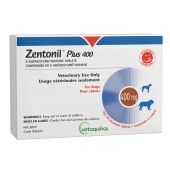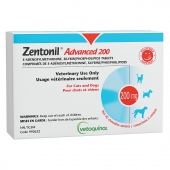Dogs throw up for many reasons, from eating something they shouldn’t have to being host to a parasite or as a symptom of a serious disease. How can you know if your pet needs help, or if you should wait and see? Here are a few signs you should watch out for.
When dog vomit requires an emergency vet visit
If you notice any of the following symptoms, contact your veterinary clinic for an emergency visit, as your dog could require immediate assistance:
- Diarrhea or bloody stools
- Shaking after vomiting or becoming lethargic
- Vomiting blood (red or pink colour)
- Eating a foreign object or a toxic substance
- Trying to vomit but being unable to
- Refusing to eat or drink
- Enlarged abdomen
- Pre-existing medical condition
- Puppy or senior dog
If your dog vomits only once, but otherwise seems like their usual self and continues to eat and drink normally, it may be safe to simply keep an eye on their condition. If you are in any doubt, calling your veterinary clinic is always advisable.
Is it vomit or regurgitation?
Vomiting occurs when your dog’s body forcefully expels the stomach’s contents. The substance may contain partially digested food, can include bile or a coloured liquid and usually has a sour smell. It’s typically preceded by heaving and unusual sounds.
Regurgitation is a sudden, milder ejection of digested or undigested food and should be no cause for immediate worry. It often takes place soon after your dog has eaten too much or too quickly, when getting overly excited soon after eating or because of a food intolerance. If multiple episodes occur, your dog should be examined by a veterinarian
What the colour of your dog’s vomit can tell you
The appearance of your dog’s vomit can provide clues as to what’s happening.
- Red or pink dog vomit could indicate bleeding into the stomach or intestine caused by an ulcer, a tumour, a foreign object or other conditions that requires urgent medical assistance.
- Yellow dog vomit usually takes place on an empty stomach. Bile secretions give the vomit this colour.
- A clear, liquid vomit usually contains mostly water, and may occur when your dog drinks too soon after being sick. Provide your dog with a smaller quantity of water more often, increasing the amount until they recover.
- Green vomit may be seen if your dog has eaten grass, possibly as an attempt to appease an upset stomach. Alternatively, green vomit may also be seen with more serious conditions, such as a foreign body obstruction.
Does your dog suffer from acute or chronic vomiting?
Acute vomiting takes place over a short period of time with no warning and no prior episodes. It could be triggered by anything from eating spoiled food or drinking contaminated water, by a contagious disease such as parvovirus or by a parasite. Contact your veterinary clinic if your dog shows any of the additional symptoms listed above, or vomits more than once in a day.
Chronic vomiting is vomiting that has been going on for a longer time. It may be intermittent with symptoms that come and go, such as a dog that vomits every few days or few weeks. Further investigation is needed to determine its cause and treat the condition. It could be food intolerance, a parasite, pancreatitis, inflammatory bowel disease or a stomach ulcer, among other things.
Dog vomit and diarrhea: a dangerous mix
Vomiting and diarrhea both cause dehydration. When they occur simultaneously, your dog may become dehydrated very quickly, leading to severe complications. Carefully monitor your dog’s water intake, and contact your veterinary clinic if your dog has trouble keeping water down, is urinating less or seems lethargic.






